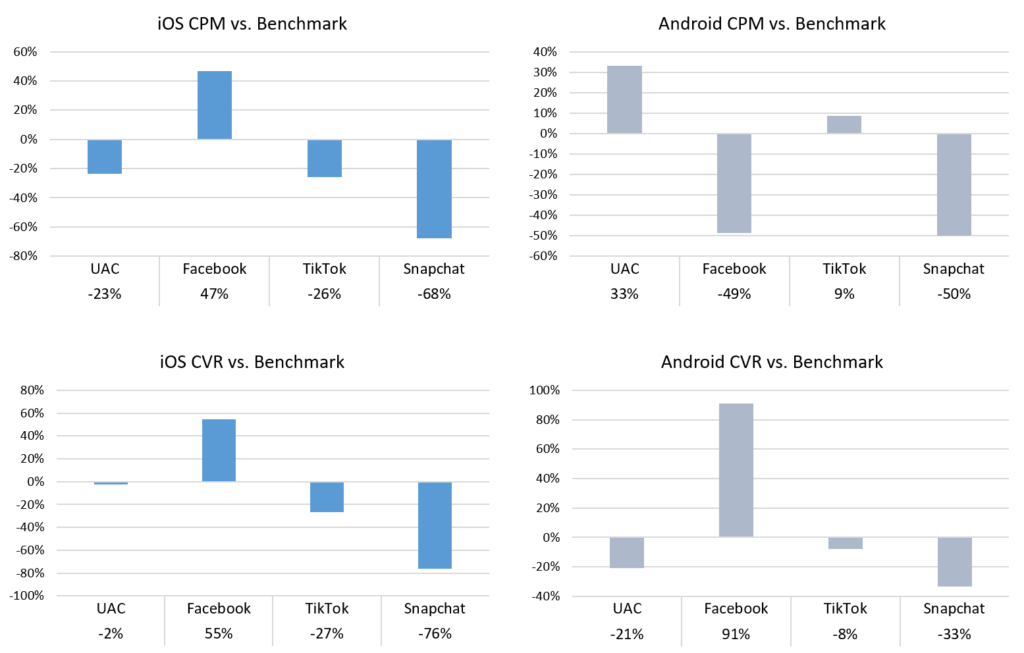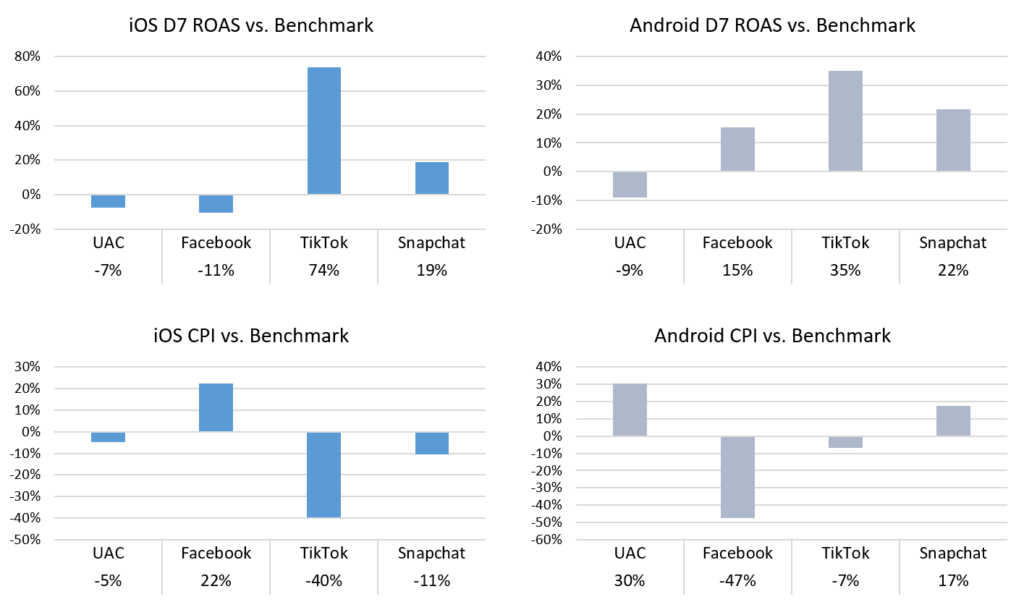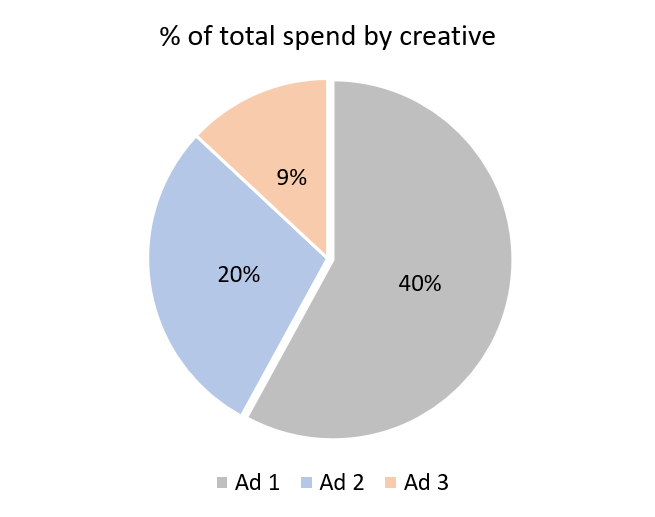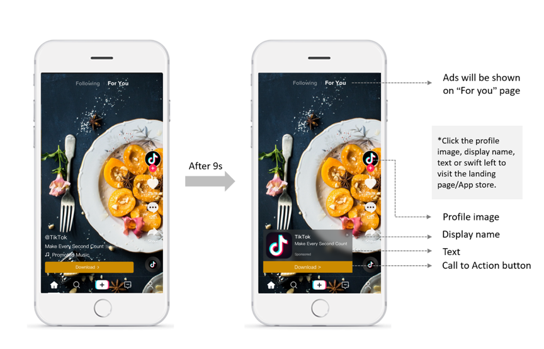Incipia blog
TikTok Advertising: A Mobile Marketing Case Study
Are you a mobile advertiser thinking about exploring opportunities in this 800+ million global DAU channel with an exploding popularity in the US? (Source: Business of Apps and Google Trends)
Look no further for everything you need to set up and run your very first install optimized campaign. This post covers three parts:
- A performance Case Study - 3 week test summary and channel comparison for one app
- Targeting - all the levers you can pull
- Creative - summary, challenges and best practices
Part 1: Performance Case Study - 3 week test summary and high level channel comparison
Week 1 - exploration phase. With a goal to identify scale, CPI and profitability potential from our test budget, we started in iOS (because they’re typically the bread and butter users). After the first few days of being live, we began to increase daily budgets by ~25% and expanded to Android, which rapidly chewed us through our test budget. By day 7, the growth potential was beyond evident.
Optimization learnings:
- Bid level - first we ran bid tests to compare scale vs cost efficiency - the head room on CPA from our initial, higher bids was over 50%, so we rapidly tested 50% bid reductions on new ad groups. We were able to still achieve the same amount of scale as those ad groups of higher bids, but at a much more efficient CPI.
- Auto vs non auto creative optimization - auto creative optimization quickly identified from 4 videos (a mix of user generated content and animated) and 3 text assets, which combo to move forward with in non auto creative ad groups.
- Standard vs. accelerated budget delivery - after testing both, we decided to move forward with standard.
- CPM - despite TikTok being limited to select advertisers, we didn’t necessarily see all time low CPMs as expected.
- Ad engagement - CTR & CVR trended significantly higher than other channels for iOS, but keep in mind this was also really dependent on creative wins. You can ask your TikTok reps for CPM, CTR and CVR benchmarks for your app category to guide your efforts.

Data illustrated is relative to a benchmark average of all channels for one app in this case study.
Challenges: unlike any other channel, whether it was a brand new ad, or an existing ad from the creative library that had already served in another ad group, any ad change would force an entire ad group back into review. We missed out on a few days of high volume potential because of creatives launched outside of the US ad review team working hours. Fortunately, there was a change in the algorithm effective April 28 for edits in ongoing ad groups to no longer pause the entire ad group for review!
Week 2 - scale potential at amazingly low CPI trends. We spent the last of our test budget by day 10 and started to get more aggressive with budget increases - up to 50% at a time, but CPI started to increase too. At that point, our TikTok Account Manager suggested it was likely due to creative fatigue as our top ads were serving for almost 2 weeks.
Optimization learnings:
- Gender split - we increased scale on female only targeting by 2x that of male and female.
- New creatives - launched 5-7 new ads per ad group but difficulty in finding additional wins (more under challenges).
- Bid adjustments - TikTok best practice suggests raising bids whenever CPA exceeds bid. We tested 3-10% increments and for the most part, did not find much improvement. Instead we moved to the next, fresh ad group or creative test.
Challenges: only 1 ad out of 3-5 ads per ad group would receive all the impressions and spend, so it was definitely a challenge to gather data on new creatives because we couldn't get them to serve. We tested separate ad groups dedicated to new creative as well as temporary pauses on top spenders to force impressions to others.
Week 3+ - overall findings and why we are incorporating TikTok as part of our UA strategy.
Our test showed TikTok to be an extraordinarily profitable ad channel, especially as the platform (according to our TikTok team) skews 3 Android:7 iOS users. The proof is in the pudding - peep that D7 ROAS! And as you can see, TikTok CPI was extremely low cost relative to other active channels.

Data illustrated is relative to a benchmark average of all channels for one app in this case study.
TikTok’s learning phase: Each channel has its own period of learning where the algorithm looks to reach the most suited users for your ads. TikTok is most similar to Facebook (except from the 7 day rule) where an ad group requires 50 conversions to escape the learning phase. The algorithm will try to push new ad groups until it reaches 20 conversions, which TikTok calls the “cold phase”. It’s recommended to leave everything untouched while in learning unless performance absolutely tanks or it seems impossible to achieve at least 20 conversions in 10 days. If the ad groups aren’t serving, then you could try a restart at a higher bid and/or audience and creative changes.
- Keep bid adjustments within 20% increments.
- Budgets can be increased up to 50% at a time without forcing the ad group back into review.
- Daily budgets should be set at least 20x your bid.
Since there are no existing learning and auction overlap tools like Facebook, it’s best to keep track of your daily conversions and dedicate the majority of your daily spend on ad groups out of the learning phase. Having too many ad groups in the learning phase may hinder performance. Additionally, TikTok recommends to avoid using the bulk clone feature on existing ad groups and instead launch fresh new ad groups.
Part 2: Targeting - all the levers you can pull
Whether your goal is app installs, conversions, or traffic, you control your objective at the campaign level.
Next, the ad group. Broken up into 6 levers and where you have all the power.
- Placements: available placements by location.
- Ad details: select your app, display name, category, and up to 20 ad tags that describe your app (think of your ASO keywords!). The algorithm will do it’s best to use tags to match your ads with their audience. You can also turn commenting on/off. TikTok has not explicitly said it is best practice one way or the other, but keep in mind comments can help the ad look more native to the UI. To preview an ad and/or view comments, you need to download the app and follow these steps.
- Creative type: select whether you want automated creative optimization on or off – think of Facebook’s dynamic creative optimization. You give the ad group up to 10 ads and 5 text assets and the algorithm does the rest to find the perfect combo.
- If you use auto creative optimization, note the following: you cannot manually toggle ads on/off. Instead you can add and “delete” at the create level.
- At lower budgets, be wary of having too many ads live as the majority of impressions and spend will fall to one ad and you will not be able to learn from the ones that don’t serve. If you happen to have the issue that the majority of creatives do not get enough traffic to learn from – we would recommend forcing impressions through separate ad groups or a dedicated testing campaign. Set a target for how many impressions, conversions, installs, etc. you need before you move onto the next test.
- Targeting: audience, demographics, interest category and device
- Audience: create from a customer file, engagement, app activity or website traffic. Read more about custom audiences here. Note that for lookalikes, it’s recommended to have a cohort size of at least 1000.
- Demographics:
- Location - available in over 20 countries.
- Gender
- Age – no limit or increments of 13-17, 18-24, 25-34, 35-44, 45-54, 55+
- We recommend starting with a broad audience and then breaking out simultaneous gender and age tests pending your first few day trends. TikTok says that as long as the targeting is not too specific and detailed that the ad groups should not compete against each other.
- Language
- Interest category (over 15 to choose from)
- Device: connection type, carriers, device price, OS
- Budget & Schedule: can control budget at the campaign or ad group level.
- In TikTok’s current state, billing is done via what they call “top up requests". Essentially, an advertiser sends email requests with a “top up” amount, which then becomes the available account balance in the ads manager. Monthly invoices are emailed with bank transfer account information. At this time they only support wire transfers, but our TikTok team said they are internally working on an automated billing system.
- We received notifications in the ads manager and via email when our budget was pacing to spend the remaining account balance 3 days in advance. It’s important to closely monitor budget pacing as you fund the account to ensure you don’t miss out on volume due to insufficient account balance.
- Bidding & Optimization
- TikTok is CPC ads platform, so your default will be click as the optimization goal and billing event.
- The details on TikTok attribution logic found in their ads attribution documentation states, “We recommend the click-through attribution window to be 7 days, and the view-through attribution window to be 1 day. Installations and activations beyond the attribution window are considered organic actions and will not be attributed to TikTok Ads". Read more about TikTok Third Party Tracking here.
- Bid setting: it’s recommended not to keep too low of a bid since ad groups are pushed on eCPM rank (eCPM = Bid * CTR * CVR). You should work with your TikTok team on a suggested starting point. Don’t be afraid to get curious with testing lower bids to force lower cost installs. You can always work backwards (start high, lower over time, or start low, raise over time). Like a bid cap in Facebook, and max bid in Snapchat, the standard bid strategy in TikTok will control your average cost around or lower than your bid. There is a max conversion bidding that will get the most conversions for your budget that is in beta. Read more on bidding best practices.
- AEO is also currently in beta and available for select accounts once enough accumulated events are reached. Events are classified by upper funnel events such as login rate and registration rate, which need to have at least a 10% CVR before you can unlock AEO. And deeper funnel events such as purchase rate, need to have at least a 1% CVR, converting 20+ events per day. You can work with your TikTok team for recommendations and bids.
- Delivery type: standard or accelerated budget
- TikTok is CPC ads platform, so your default will be click as the optimization goal and billing event.
Keep TikTok’s campaign optimization checklist handy to make sure you’re following all best practices.
Part 3: Creative - summary, challenges and best practices
By the end of our third week of testing, we had gathered data on 33 ads (~10% of those 33 ads were top performers from other channels). We actually identified 3 new top spenders that were iterations or normally subpar performers in other channels. As you can see in the chart below, 40% of our spend was on one single ad and the rest of the spend was distributed to ads 2 & 3 (per our earlier call out, we faced the challenge of getting more than 1-2 ads to serve).
Creative hits will be your keys to success. Which is why it’s extremely important to study up on TikTok’s ad policy to minimize rejections so that you move through your creative testing backlog with fewer roadblocks along the way. Especially for AR, action and casino games, the ad policy could make it even more difficult to re-purpose what may have worked in other channels for TikTok.
We experienced a lot of ad review inconsistency across campaigns and ad groups because a review team conducted a creative inspection first, and then a quality control team conducted a second review. At least TikTok includes a “reason” to each rejected ad, providing some insight into what needs to be fixed. Some examples below:
- “The ad features content which violates public morals or public order, which is prohibited in our ad policy.”
- “The ad features sexually suggestive content.”
- “The ad features sensitive content related to war. This could include disrespectful actions, words, or symbols related to war.”
Saving the best for last - creative best practices:
- Video length needs to be at least 9s otherwise the “download” card will not appear. Max 60s (note that ad engagement is not measurable in TikTok)
- Shorter may not always be better, test different increments i.e 10s, 20s, 30s, 40s+ videos to find what works best.
- Optimize for sound on.
- Portrait orientation is best, but experiment with landscape and square as it’s also supported. Our TikTok team shared a high level summary from an internal case study that identified portrait ads have up to 7x more engagement. Check out all the ad specs here.
- Update creatives at least every 7 days to keep your ads fresh (TikTok recommended).
- Start with top performers in other networks but don’t be surprised if they don’t work. Remember that TikTok user behavior is completely different from other channels.
- Be ready to test different variations - influencer, gameplay, text overlay, split screen reaction style videos and voice overs separately and together until you find your perfect combo.
- Use "swipe left" as your CTA instead of "swipe up" because only swiping left will take the user to the app store. And avoid buttons or “click here” because clicking anywhere but that download card on the ad will actually pause the video.
- Make sure creatives account for the safe zones and the download card.
Image from TikTok Placement documentation
Categories
Tags:
- A/B testing
- adjust
- advertising
- adwords
- agile
- analytics
- android development
- app analytics
- app annie
- app development
- app marketing
- app promotion
- app review
- app store
- app store algorithm update
- app store optimization
- app store search ads
- appboy
- apple
- apple search ads
- appsee
- appsflyer
- apptamin
- apptweak
- aso
- aso tools
- attribution
- client management
- coming soon
- design
- development
- facebook ads
- firebase
- google play
- google play algorithm update
- google play aso
- google play console
- google play optimization
- google play store
- google play store aso
- google play store optimization
- google uac
- google universal campaigns
- idfa
- ios
- ios 11
- ios 11 aso
- ios 14
- ios development
- iot
- itunes connect
- limit ad tracking
- ltv
- mobiel marketing
- mobile action
- mobile analytics
- mobile marketing
- monetization
- mvp
- play store
- promoted iap
- promoted in app purchases
- push notifications
- SDKs
- search ads
- SEO
- skadnetwork
- splitmetrics
- startups
- swift
- tiktok
- uac
- universal app campaigns
- universal campaigns
- user retention
- ux
- ux design

